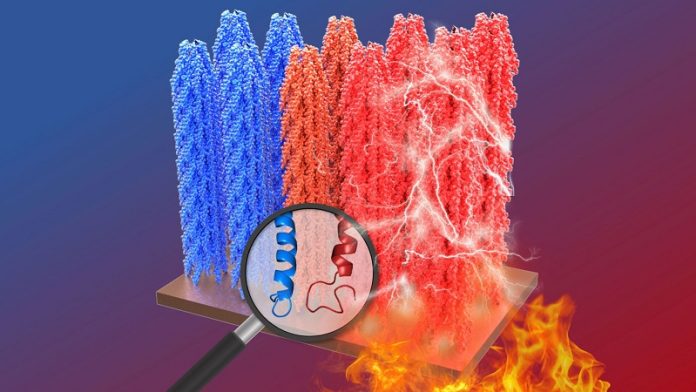
Researchers from the University of California, Berkeley have made a fascinating discovery: certain viruses can create electricity when heated!
This breakthrough might help us develop revolutionary medical diagnostic tools and offer a multitude of other applications in medicine, environment, and energy.
Viruses usually have a bad reputation due to their association with diseases. However, not all viruses are harmful.
Some, like bacteriophages, are actually helpful, as they can destroy harmful bacteria. By studying such viruses, the Berkeley researchers have found out how to use them to produce electricity.
The scientific term for generating electricity from heat is “pyroelectricity.” The team engineered bacteriophages or “phages” in a way that let them change structurally when exposed to heat, creating an electric potential or, in simpler terms, generating electricity.
This exploration into “bioelectricity,” or electricity within living cells, has ancient roots, with studies dating back to ancient Egypt.
Scientists’ curiosity was ignited in the 18th century when Luigi Galvani discovered that electricity could make frog legs twitch.
Since then, the study of bioelectricity has made considerable advancements, but we still have much to understand about how cells, tissues, and proteins create electricity.
Professor Seung-Wuk Lee and his team chose viruses as their subject because they are ideal for studying the link between structure and function in bioelectricity generation due to their self-replicating and evolving nature and identical shape and material, allowing them to assemble like objects in a box.
The team had previously demonstrated the potential of a specific virus, the M13 virus, to generate electricity in response to pressure over a decade ago. In this new study, they genetically modified the protein structure of the virus to enhance its ability to respond to heat and generate electricity.
The researchers observed that when heat was applied to these engineered viruses, it altered their protein coating, leading to a difference in electrical potential.
They further explored the virus’s pyroelectric response by attaching peptides, small parts of proteins, which responded to specific organic compounds. They found that the engineered viruses generated different electrical responses when exposed to various solvents.
These discoveries hint at a world of possibilities! Imagine having handheld devices that utilize this technology to sense different viruses and detect new strains.
Professor Lee envisions this technology opening doors to creating new bioelectric materials for bioelectronics and energy harvesting and inspiring the development of innovative bio-inspired devices.
To test out their theory, Lee and his colleagues engineered the M13 phage’s protein structures at a nanometer scale. They observed and measured the virus’s electrical response to heat and found that it indeed produced a pyroelectric response.
Depending on the chemical receptor attached, they could detect harmless or toxic chemicals like xylene easily.
Lee and his team are excited about the potential applications of this technology.
They believe it could help in developing novel biosensors and other devices that use pyroelectricity for detecting viruses and even new strains of viruses, offering a gateway to the development of new bioelectric materials and devices inspired by biology.
This research is a vivid example of how exploring the intricacies of the natural world, even in something as seemingly harmful as a virus, can lead to innovations that have the potential to transform our world in diverse and unimaginable ways.
Follow us on Twitter for more articles about this topic.



